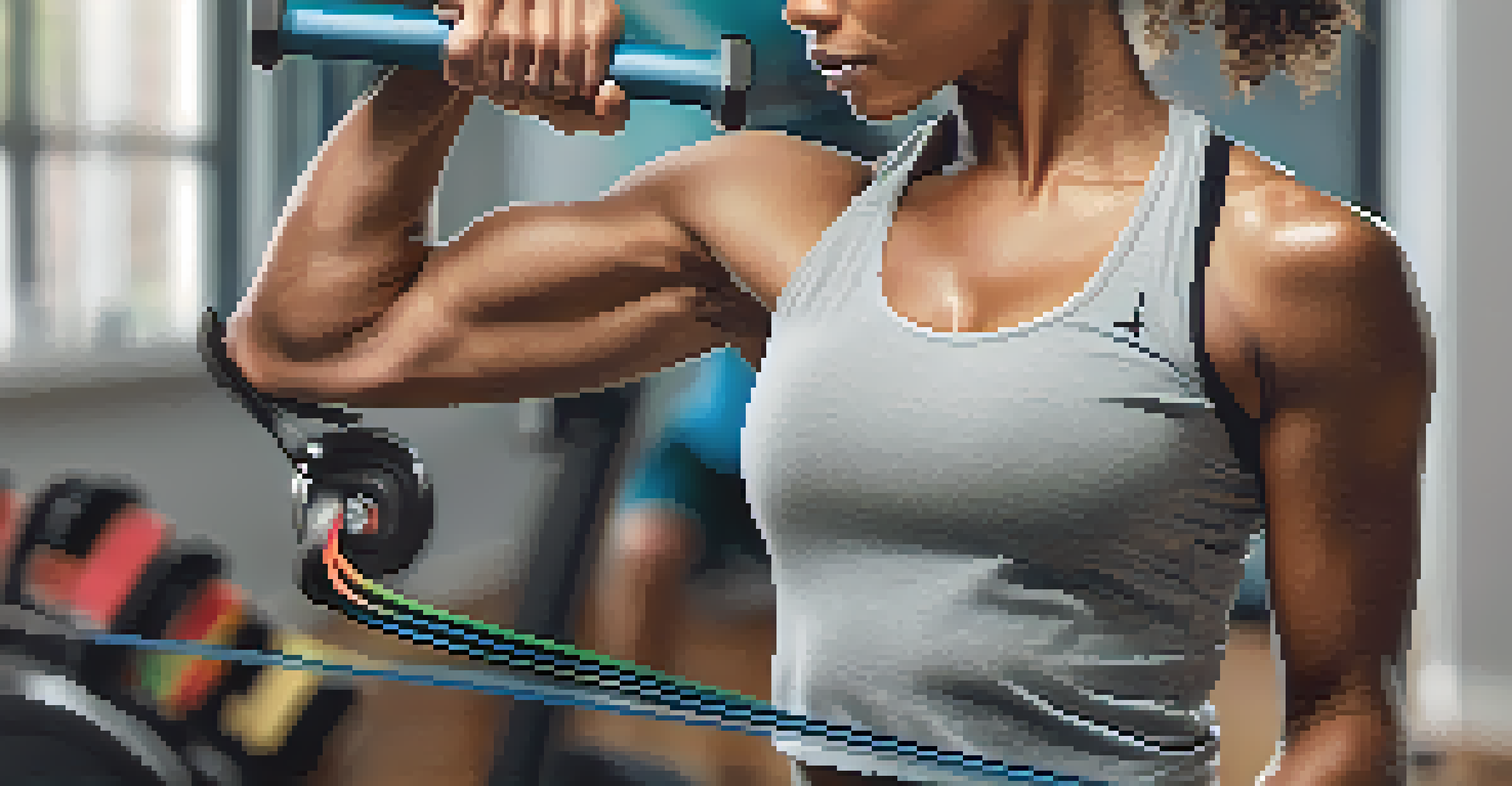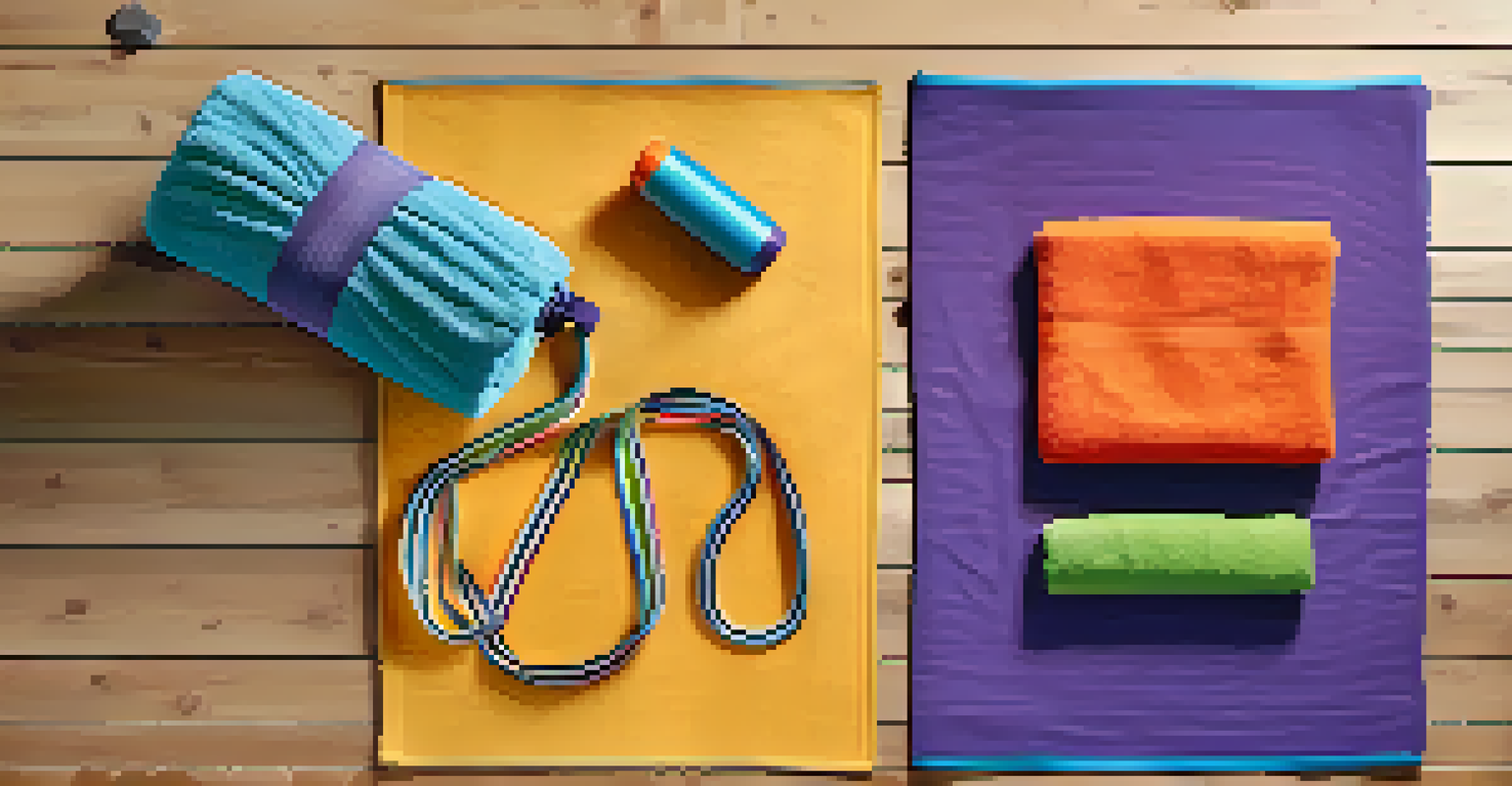The Best Resistance Band Workouts for Home Bodybuilding

Why Choose Resistance Bands for Home Workouts?
Resistance bands are a versatile tool for home bodybuilding. They’re lightweight, portable, and can be used in various exercises to target different muscle groups. Unlike traditional weights, bands provide constant tension and allow for a wider range of motion, which can enhance muscle activation.
The secret of getting ahead is getting started.
Using resistance bands also reduces the risk of injury, making them an excellent choice for beginners or those recovering from injuries. They allow for controlled movements, helping you build strength without straining your joints. Plus, they can be easily adjusted for different resistance levels, accommodating your progress over time.
Incorporating bands into your routine not only saves space but also encourages creativity in your workouts. You can perform a wide range of exercises that mimic traditional weightlifting movements, such as squats, bench presses, and deadlifts, all from the comfort of your home.
Getting Started: Essential Resistance Band Exercises
Before diving into specific workouts, it’s essential to familiarize yourself with some foundational exercises. Key moves include bicep curls, tricep extensions, and lateral raises, which target major muscle groups. These exercises help build a solid foundation for more complex movements later on.

To perform a bicep curl, stand on the band with feet shoulder-width apart, holding the handles with palms facing up. As you curl the handles towards your shoulders, keep your elbows close to your body for maximum effectiveness. This basic move can be modified by adjusting the band's tension for increased resistance.
Versatile Home Workout Tool
Resistance bands are lightweight and portable, making them an excellent choice for effective home workouts.
Practicing these essential exercises will not only improve your form but also boost your confidence as you progress. Remember to focus on your breathing and maintain a steady pace to ensure you’re engaging your muscles effectively while avoiding injury.
Full-Body Resistance Band Workout Routine
A full-body workout is an excellent way to utilize resistance bands effectively. Start with squats, followed by push-ups, rows, and lunges, ensuring you hit all major muscle groups. This routine can be completed in under 30 minutes, making it perfect for those with busy schedules.
It does not matter how slowly you go as long as you do not stop.
For example, after performing squats with the band anchored under your feet, you can transition into banded push-ups by wrapping the band around your back and holding onto the ends. This added resistance will help build upper body strength while maintaining proper form.
Incorporating a variety of exercises in your routine not only prevents boredom but also promotes balanced muscle development. With consistent practice, you'll notice improvements in strength and endurance, all from your own home.
Targeting Your Upper Body with Resistance Bands
Focusing on your upper body is crucial for building strength and definition. Resistance bands can be used for various upper body exercises, such as chest presses, shoulder presses, and tricep kickbacks. These movements effectively target the chest, shoulders, and arms, contributing to a well-rounded physique.
For the chest press, anchor the band behind you and hold the ends with your hands. As you push forward, engage your core to stabilize your body. This exercise mimics the traditional bench press but allows for a more controlled movement, reducing the risk of injury.
Full-Body Workout in 30 Minutes
A quick full-body resistance band routine can be completed in under 30 minutes, perfect for busy schedules.
Regularly incorporating upper body resistance band exercises into your routine will help you achieve toned arms and a strong chest. Plus, as you increase the resistance, you’ll continue to challenge your muscles and promote growth.
Building Lower Body Strength with Resistance Bands
Lower body workouts are essential for overall strength and stability. Resistance bands are perfect for exercises like glute bridges, leg lifts, and side steps, which target your glutes, hamstrings, and quads. These movements are not only effective but also easy to perform at home.
To perform a glute bridge, lie on your back with your feet flat on the floor and a band around your thighs. As you lift your hips towards the ceiling, squeeze your glutes at the top of the movement. This exercise effectively engages your lower body while minimizing strain on your back.
By consistently adding lower body exercises to your routine, you'll notice improvements in your strength and mobility. Plus, a strong lower body is crucial for everyday activities and overall athletic performance.
Core Strengthening with Resistance Bands
Developing core strength is vital for overall fitness and stability, and resistance bands can play a significant role in this process. Exercises like seated twists, banded planks, and resisted Russian twists engage your abdominal muscles effectively. A strong core not only supports better posture but also enhances your performance in other exercises.
For a banded plank, loop the band around your forearms and anchor it behind you. As you hold the plank position, the band will create resistance, forcing your core to work harder to maintain stability. This added challenge can make a simple plank much more effective.
Balanced Strength Training Plan
Creating a balanced workout plan that targets all major muscle groups with resistance bands promotes overall strength and prevents overtraining.
Incorporating core exercises into your routine will improve your balance and strength in everyday movements. Plus, a strong core can help prevent injuries during other workouts, making it an essential component of any fitness regimen.
Creating a Balanced Resistance Band Workout Plan
To maximize your results, it’s important to create a balanced workout plan that incorporates resistance band exercises for all major muscle groups. Aim to include upper body, lower body, and core workouts throughout the week. This variety will prevent overtraining and promote overall muscle development.
Consider scheduling your workouts in a way that allows for recovery between sessions. For example, alternate between upper body and lower body days, while including core exercises on both. This approach will help you stay motivated and engaged while ensuring your muscles have time to recover.

Tracking your progress is also key—note the resistance levels you’re using and the number of repetitions you complete. This way, you can gradually increase the intensity of your workouts, ensuring continued growth and strength gains over time.